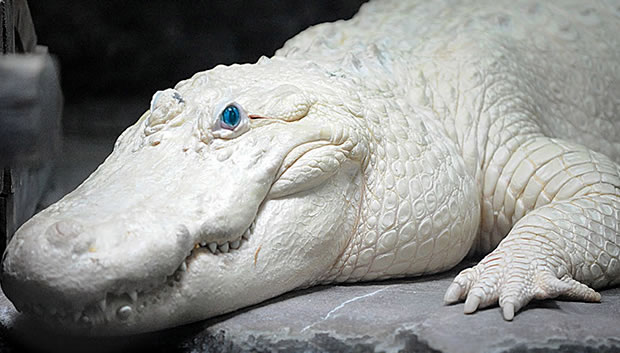Creature Profile
Also known as the Tasmanian wolf, the Tasmanian tiger is a large marsupial native to
Tasmania in Australia that closely resembles a striped coyote. Most scientists believe that
this creature is extinct, but dozens of unconfirmed sightings and even tiger tracks are reported
each year in remote areas of the state. Although this species is called tiger (named for its stripes)
and wolf (due to its canid-like appearance), it is not a member of the cat or wolf family. It is a
member of the marsupial family, a group of mammals in which females possess pouches for rearing
their young at infancy. Other members of this family include kangaroos, wallabies, and koala bears.
Adults reach about five feet long and have a short, thick, light brown coat with 13 to 19 dark
stripes across the lower back. The tail is very thick and resembles the tail of the tapir. The
average weight is between 44 and 55 lbs. The face if gray with white markings around the eyes.
Tasmanian tigers also have long canines very similar to those of dogs. Both male and female possess
a pouch. The pouch of males acts as a protective sheath for the external organs while running
through thick bush, while the pouch of the female is useful for caring for her infants.
Tasmanians tigers were once found in open forests and grasslands, but toward the end of its
known existence, they were confined to dense rainforests due to human disturbance and settlement.
Their lairs were usually found in hollow logs or rock outcroppings found in hilly areas that were
adjacent to open areas, such as grasslands. They were nocturnal creatures, but were at
times observed basking in the sun. They preferred to hunt alone or in small groups, and some
scientists believe that they were ambush hunters. Little is known about the food habits and
breeding behavior of this creature. Scientists believe that its diet consisted of wallabies,
small birds, kangaroos, and other small mammals. Breeding season may have taken place in the
fall, and females may have given birth to two to four young between the months of December and March.
The last known living Tasmanian tiger died in a zoo in Hobart, Tasmania in 1936. Since there
have been no confirmed sightings since that time, it is believed that the species is extinct.
Causes of declined include overhunting by natives, habitat destruction, disease, and competition
with the introduced dingo, domesticated dogs, and other species. Since there have been hundreds
of unconfirmed sightings, a 647,000 ha. reserve has been set up in Southwestern Tasmania in the
hopes that possible surviving individuals can have adequate habitat.
Wikipedia Article

|
Wikipedia Article Copyright Notice: This article is licensed under the GNU Free Documentation License. It uses material from the Wikipedia article "Thylacine". |
May 8, 2017
Glenn, C. R. 2006. "Earth's Endangered Creatures - Tasmanian Tiger Facts" (Online). Accessed 4/16/2024 at http://earthsendangered.com/profile.asp?sp=455&ID=4.
Need more Tasmanian Tiger facts?






